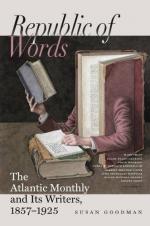Perhaps we had better take the rest into consideration together,—the magnesia and iron, and whatever other elements are found in the body. Though some of them are there in minute quantities, the structure cannot exist without them,—and for their constant and sufficient supply our food must provide.
To see what becomes of all these materials after we have done with them, we must extend our inquiries among the articles of ordinary diet and ascertain from what sources we derive the several elements.
It has been sometimes believed that none but animal food contains all the elements required for the support of life. Thanks to Liebig, we have discovered that vegetable substances also, fruits, grains, and roots, contain them all, and, in most cases, in very nearly the same proportions as they are found in animals. We are not lecturing on dietetics; therefore we will not pause to explain why, although either bread or meat alone contains the various materials for flesh and bone, it is better to combine them than to endeavor to subsist on one only.
Whither, then, go these elements when man has done with them? The answer is,—All Nature wants them. Every plant is ready to drink them up, as soon as they have taken forms which bring them within its reach. As gases, they are inhaled by the leaves, or, dissolved in water, they are drunk up by the roots. All plants have not the same appetites, and therefore they can make an amicable division of the supply. Grasses and grains want a large proportion of phosphate of lime, which they convert into husks. Peas and beans have little use for nitrogen, and resign it to others. Cabbages, cauliflowers, turnips, and celery appropriate a large share of the sulphur.
The food of plants and that of animals have this great difference: plants take their nourishment in inorganic form only; animals require to have their food in organic form. That is, all the various minerals, singly or combined, which compose the tissues of plants and animals,—carbon, hydrogen, phosphorus, and the rest, which we have already named,—are taken up by plants in mineral form alone. The food of animals, on the other hand, consists always of organized forms. There is no artificial process by which oxygen, carbon, and hydrogen can be brought into a form suitable for the nourishment of animals. As oxygen, carbon, and hydrogen, they are not food, will not sustain our life, and human art cannot imitate their nutritious combinations. Artificial fibrine and gluten (organic principles) transcend our power of contrivance as far as the philosopher’s stone eluded the grasp of the alchemists. We know exactly how many equivalents of oxygen, hydrogen, carbon, and nitrogen enter into the composition of each of the animal elements; but we can no more imitate an organic element than we can form a leaf. What we cannot do the vegetable world does for us. Thus we see why it was necessary that the earth should




